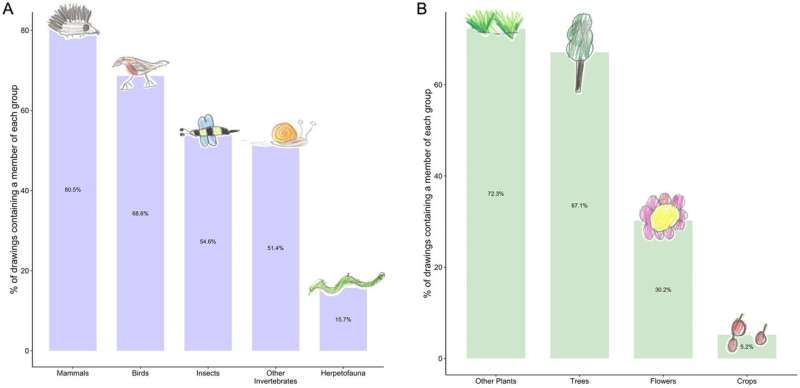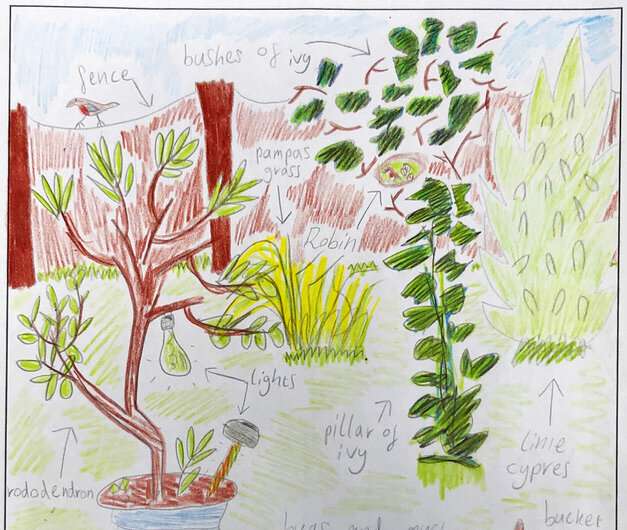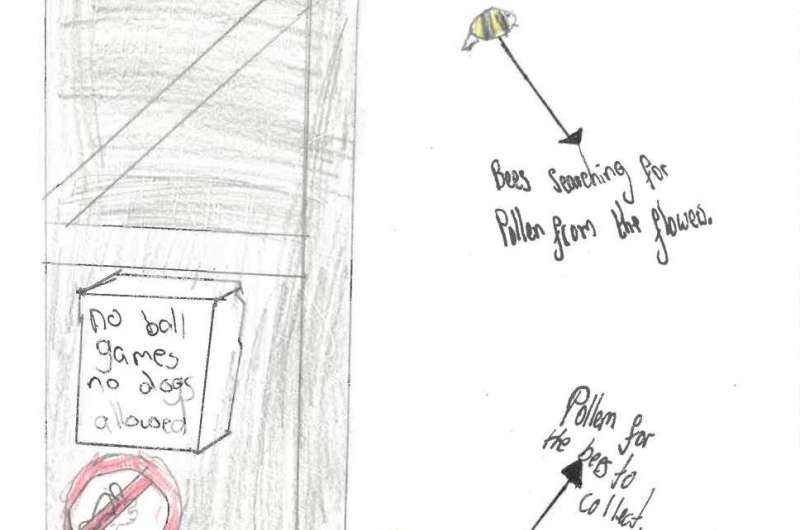This article has been reviewed according to Science X's editorial process and policies. Editors have highlighted the following attributes while ensuring the content's credibility:
fact-checked
peer-reviewed publication
trusted source
proofread
Children's nature drawings reveal a focus on mammals and birds, suggesting imbalances in ecological awareness

When asked to draw their local wildlife, 401 UK schoolchildren aged seven to 11 most commonly drew mammals and birds, while amphibians and reptiles appeared in the fewest drawings, suggesting imbalances in children's ecological awareness. Kate Howlett and Edgar Turner of the University of Cambridge, UK, present these findings in the open-access journal PLOS ONE.
Prior research has shown that, overall, European and North American children's access to green space has declined in recent decades, and they are becoming increasingly disconnected from nature. Access to green space is associated with better cognitive function for children, and disconnection with nature may reduce children's future support for conservation.
To deepen understanding of children's connection with nature, Howlett and Turner asked 401 children aged seven to 11 from 12 schools in England to draw and label the animals living in their gardens and in parks near their homes. The researchers then analyzed the different types and specificity of the wildlife depicted.
The analysis showed that mammals—such as squirrels, cats, and hedgehogs—appeared in 80.5% of the drawings, more often than any other type of animal. Birds were the second most common type, found in 68.6% of drawings. Insects and other invertebrates were less common, and amphibians and reptiles were least common, appearing in 15.7% of the drawings. Although the children were not asked to draw plants, plants appeared in 91.3% of the drawings.

The children were most specific when drawing mammals and birds, with most of these animals being an identifiable species. Among animals, insects, reptiles, amphibians and other invertebrates were less often identifiable to species. Among plants, trees and crops—such as strawberries, potatoes, and carrots—were most identifiable.
On the basis of these findings, the researchers suggest that children's ecological awareness is focused on mammals and birds. Further analysis suggested that ecological awareness may be tied more strongly to at-home or cultural influences, rather than attending a state- versus privately-funded school.
The researchers call for broad efforts to boost ecological awareness through adjusting national school curricula and expanding green spaces at schools.

The authors add, "Children's perceptions of the local wildlife with which they share their gardens and local parks are skewed towards mammals and birds. Not only do children draw mammals and birds more often than they draw invertebrates, amphibians or reptiles, but they are also able to identify them more precisely than they are the smaller, less charismatic groups."
"While this is perhaps unsurprising, given that it mirrors similar slants in wider media and culture, biases in children's perceptions of the natural world hint at a wider problem of nature disconnect and attrition of ecological knowledge, and suggest we need to readdress these biases as a matter of urgency."
More information: What can drawings tell us about children's perceptions of nature?, PLoS ONE (2023). DOI: 10.1371/journal.pone.0287370
Journal information: PLoS ONE
Provided by Public Library of Science




















